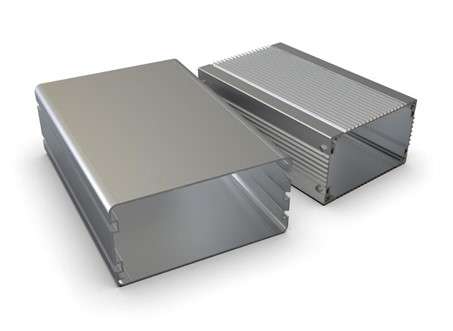
Enclosures from aluminum sheet
Electronic Enclosures refer to the box-like shapes that enclose electronic devices’ components such as PCB boards, switches, wiring, and many more. The primary purpose of the enclosures is to protect and shape the functional features. Sheet metal fabrication is the best approach to creating electronic enclosures, enabling the production of tiny to large sizes in various shapes.
Various metal & plastic sheets are used in the fabrication of electronic Enclosures, the type of material you need depends on the specification of a particular part and device.
Step 1: Fabrication of Electronic Enclosures
Step1: Sheet Metal Enclosure Design
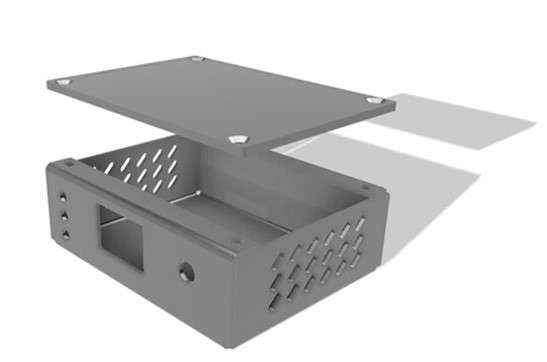
CAD model of electronic enclosure
The sheet metal enclosure design starts with identifying functional and aesthetic requirements. You need to consider various aspects of requirements, such as dimensional requirements, working conditions, connector position, mounting position, and many more.
| Operating Circumstances | What is the end-use of electronic devices? Operating temperature, vibration, and impact. Does it involve radio frequency? |
| Environmental factors | Temperature fluctuation, humidity, and corrosion potential. |
| Dimensional Requirements | Height, width, length, connection position, and required thickness |
| Mounting position | Type of mounting, filtered air intake & output, and closing position. |
| Aesthetic requirements | Color, roughness level, and surface finishing options |
Different types of requirements
Once all the requirements are identified, the next step is developing of 3D model of the enclosure. The detailed design includes all the features, dimensions, and tolerances. Knowing the many enclosure aspects will help build a 3D model that satisfies all the criteria.
The enclosure must shield electronic device components from heat, moisture, and vibration. AutoCAD, SolidWorks, and Creo are some computer software for 3D model development.
Learn more:
Technical Drawing: Its Significance in Manufacturing
Try Prolean Now!
Step 2: Material selection
The selection of material also depends on the requirements listed before. The mechanical, physical, and chemical property of the material needs to satisfy the condition of the enclosure. However, various properties also need to be taken into account.
Let us talk about some prominent sheet metal types of materials employed to create electronic enclosures.
| Aluminum | Aluminum is a lightweight material with high strength which blocks electromagnetic radiation (EM) and protects from EM interference. | Electronic devices where EM interference is an issue with functionality. It is a lousy option where a transformation of wireless signal exists, such as a Wi-Fi router. |
| Stainless Steel | Stainless Steel is a long-lasting material that offers high strength, resistance to wear and tear a shiny appearance, and corrosion resistance. | Durable enclosures for heavy electrical & electronic devices and outdoor applications. It is inappropriate for electronic equipment that demands extensive customization, tolerates heavy impact, and has weight-functionality relationships. |
| Polycarbonate (PC) | Polycarbonate is suitable for fabricating electronic enclosures because of its hardness and durability. | Industrial control panels, wiring, junctions, outdoor applications. Not suitable for large enclosures and devices that require Electromagnetic shielding |
| Carbon-Steel | Although Carbon steel is less corrosion-resistant, It offers high durability and strength. | Devices which does not require high hardness but long durability, such as control & circuit breaker boxes. Enclosures that required extreme corrosion resistance |
Step 3: Selection of thickness
Sheet metals come in various sizes and thicknesses. Another thing is the thickness of the sheet metal that you must select after choosing the type of sheet metal. The thickness chosen for enclosure fabrication must have the required strength, wear & tear resistance, and corrosion resistance. In addition, the thickness of sheet metal used in electronic enclosures should be at least 0.41mm and 0.51 mm for copper & aluminum (National Electrical Code 2020 of Illinois, 2020).
Step 4: Confirmation of Fabrication Sequence
When it comes to the construction of electrical enclosures, careful planning is essential. There are many fabrication processes, including cutting, shaping, and joining.
1 Sheet metal cutting

Laser beam cutting
Based on the features and dimensions in the 3D model, you need to cut the sheet metal into a piece of the required size. Sheet metal fabrication is one of the most common ways of cutting metal sheets in different shapes. It is possible to cut sheet metal with any approach, including shear, water jet, plasma, and laser cutting.
2 Bending

Steel Sheet Metal Bending Part
Enclosures are box-like structures, and it is achievable with the bending process. You need to fix the bending positions precisely and bend by using the bending machine.
- Throughout the bending position, the bending radius should remain constant.
- It is required to retain length at least three to four times the thickness if there are any flanges in the enclosure.
- To avoid fractures during bending, you should also consider the material composition and surface quality.
- The thickness must be at least equal to the bending radius. Additionally, CAD software can be used to determine the bend allowance.
3 Drilling
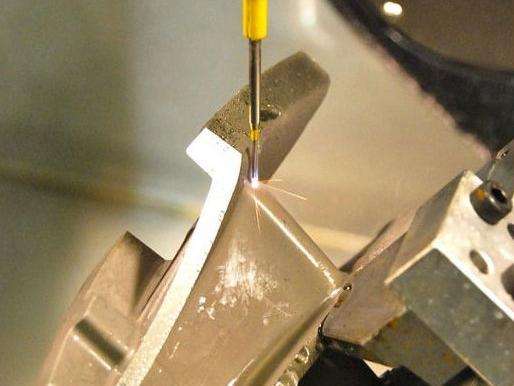
Only some enclosures might require drilling. However, drilling is optional if the design has a closing door. It is needed to create tiny holes if you are going to join the closing position with the screws.
4 Joining

Electronic enclosure with Rivet’s joints
Welding, riveting, and screws are the popular ways of joining electronic enclosures. Based on the end-use applications, create the joints at the closing positions. If the frequent opening is required, you can join with screws or make an opening door by welding. However, you can choose other approaches, such as soldering and brazing.
Step 5: Surface finishing
Sheet metal surface finishes not only improves the aesthetic appeal of enclosures but also makes them durable and prevents environmental effects such as corrosion and scratches.
There are various options for surface finishing of the enclosure, such as painting, powder coating, and plating. You can choose the right one based on the material type & operating condition of electronic devices.
1 Powder Coating
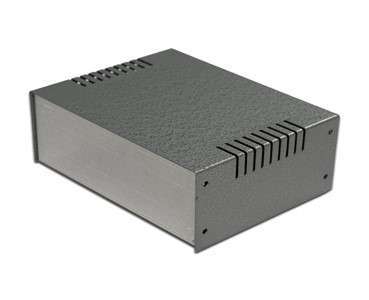
Electronic enclosure with powder coating finish
The powder coating process electrostatically applies the thermoplastic powder on the surface of enclosures and develops a protective layer. It is prevalent for electronic enclosures because of the different options of color and textures. The powder coating layer can prevent corrosion and scratches without disturbing the dimensional consistency. It applies to many materials, such as aluminum, steel, copper, and plastics.
2 Anodizing
Anodizing is a suitable surface finishing option for a non-ferrous enclosure, such as aluminum anodizing. It develops the oxide layer of substrate material to protect the enclosure from corrosion and other environmental effects. In addition, the layer never gets peeled off.
3 Painting
Painting is another option for surface finishing of electronic enclosures. It involves the spraying of paint on the surface to develop a thin protective layer of paint. It provides excellent aesthetic beauty along with prevention from environmental effects.
4 Plating
Zinc plating is the best option for steel enclosures. Electro-deposition of Zinc adds a thin layer of protection to the surface without losing dimensional stability, producing a smooth, drab gray surface.
Plating nickel is another option that provides excellent resistance to corrosion and wears. Like Zinc plating, it also involves nickel’s electro-deposition on the enclosure’s surface.
Special Types of Electronic Enclosures
Based on the applications, there are some special types of electronic enclosures. Let us overview them in detail.
1 Computer Enclosures
The primary purpose of a computer enclosure is to protect the hardware components from outside elements, such as moisture and dust.
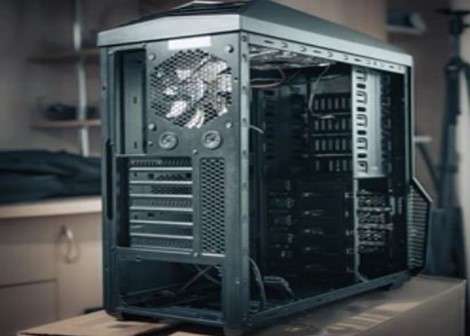
Computer enclosure
It is crucial to take several considerations while designing the computer’s enclosure, including whether it will be used in a residential, business, or industrial setting, varying temperature ranges, moisture, dust, and flying debris. The common material for sheet metal includes aluminum, stainless steel, or plastics.
2 Cabinet Enclosures
Cabinet enclosures are associated with protecting audio and video equipment, such as TV and cameras. It is also suitable for heavy-duty design with enclosure doors (Brown, 2020)
3 Display Enclosures
We use various display gadgets, such as screen touch phones, digital attendance devices, and many others. These enclosures are used where the screen must be protected from daylight, liquids, and collisions. Plastics and glass are two materials frequently used to make display enclosures.
4 Wall-mounted Enclosures
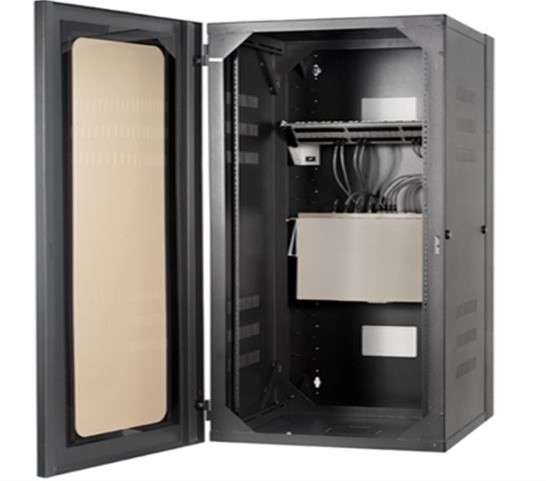
Wall-mounted enclosure for control panel
Wall-mounted enclosures are applicable for control panels and electronic devices with damage, contaminations, heat, and other hazardous environments. The ideal materials for wall-mounted enclosures are carbon and stainless steel.
5 Portable Enclosures
Portable Enclosure Portable enclosures refer to the enclosures of portable electronic devices such as TV, remotes, controller, laptop, and sound systems. The best material options for portable enclosures are aluminum, steel, and various plastics. It needs to be light in weight and have good strength.
6 EMI Enclosures
Along with the basic needs of enclosures, EMI enclosures are used in devices where frequency interference disturbs the functionality of electronic devices, such as Wi-Fi routers and remote controllers. Aluminum and steels are the best materials for EMI enclosures.
Advantages
Using a sheet metal fabrication approach for Electronic Enclosures has several advantages.
- Cost-effective
Sheet metal fabrication is a less expensive process when compared to other techniques like CNC machining and 3D printing. It does not call for an expensive or complicated setup.
- Accuracy
Creating electronic enclosures from sheet metal is a precise process. It is capable of producing enclosures with highly accurate tolerances.
- Complexity
There are several fabrication operations, and anyone can be applied for the enclosure, such as cutting, bending, stamping, punching, joining, and many more. Depending on the complexity, the correct fabrication sequence needs to be chosen.
Conclusion
Sheet metal enclosures for electronic device provides various advantages. It is a low-cost fabrication approach with a quick lead time, which protects the device from environmental and functional disturbance. Designing is the most critical factor in the fabrication of enclosures. All the requirements need to be identified and considered during the development of the 3D model.
For the optimized sequence, various fabrication options are required to ensure quality, low material wastage, and quick lead time. So, it is best to take service from experts and professionals. Prolean provides professional sheet metal service, you can always contact us for any help with your project.
FAQ’s
What is meant by sheet metal enclosures?
Sheet metal enclosures are box-like structures that shield various components of devices from adverse environmental factors like moisture, heat, impact, and more. It is crucial to have suitable enclosures for electronic devices to maintain functionality and protect them from environmental effects.
What are the important considerations in the sheet metal fabrication of electronic enclosures?
The demand in operating circumstances comes first, followed by material choice, order of manufacture, and surface finishing.
Why is the sequence of fabrication important?
Every step of fabrication has a variety of possibilities. For example, cutting can be done with a water jet, shear, plasma, or laser beam. The ideal fabrication process reduces tolerances, lead times, and material waste.
What are the surface finishing options in the fabrication of electronic enclosures?
Popular options for surface finishing include painting, anodizing, plating, and powder coating. However, the best approach relies on the material type, specifications of the electronic enclosure, and operating conditions.
What benefits can sheet metal fabrication techniques offer when making electrical enclosures?
There are many advantages in accuracy, complexity, lead time, and cost.
Bibliography
Brown, P. (2020). Cabinet-style electric enclosures for simplified harsh.
National Electrical Code 2020 of Illinois. (2020). NFPA.
Serksnis, T. (2019). Designing Electronic Product Enclosures. Springer Cham.




0 Comments